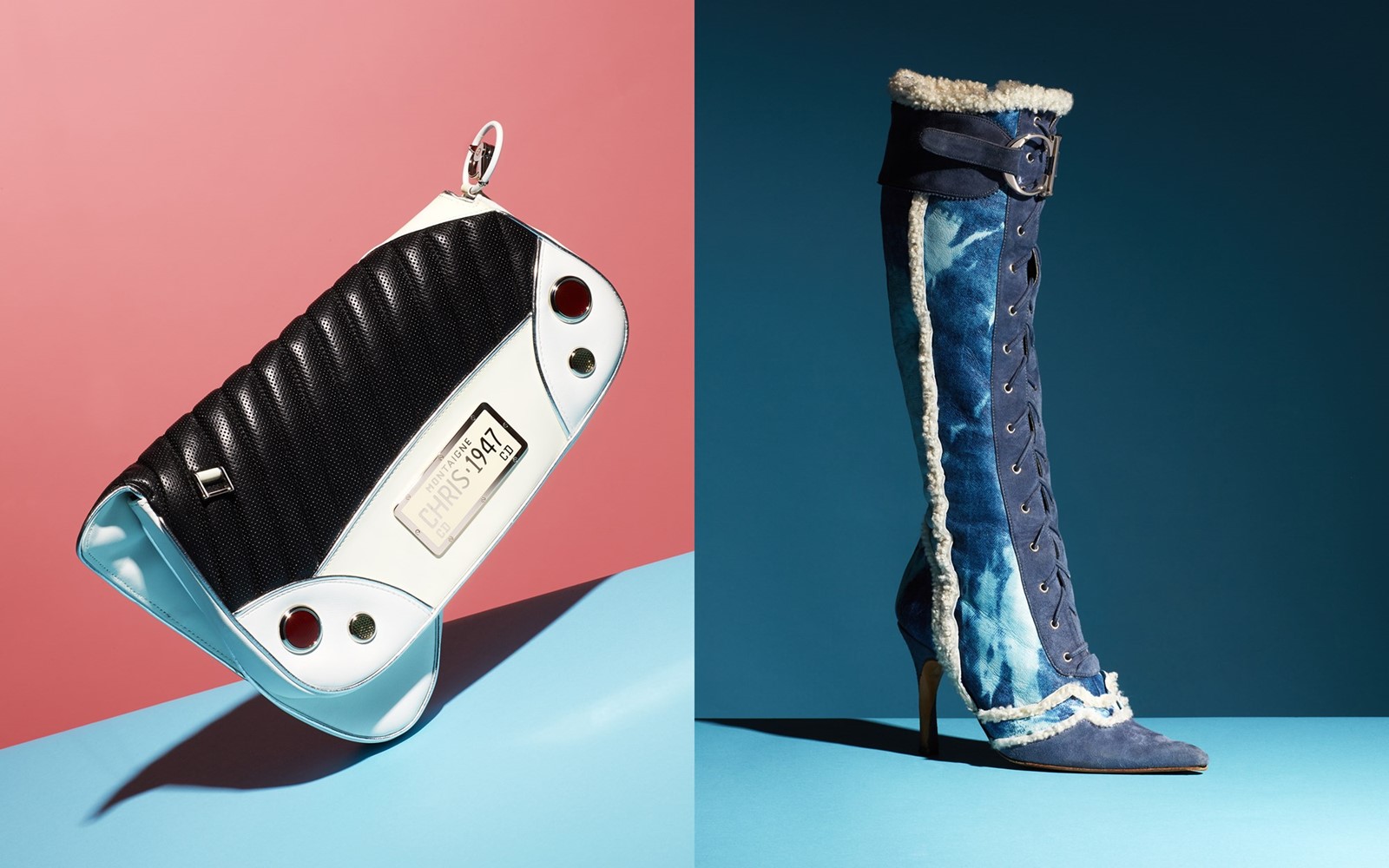John Galliano is a genius. There, I’ve said it. I not only say it, but I put my money where my mouth is, and am in the midst of amassing a Galliano collection my teenage fanboy self could only have dreamed of. That’s one of the things I love about clothes: the memories they evoke of times past. It’s not necessarily clothes you even wore yourself: my Galliano collection, a behemoth that takes over a whole rail and several flat, coffin-like cardboard boxes in my not-big-enough house, is all about the clothes I desperately wished I could own when I was a fanatic, fashion-obsessed 13-year-old wearing a duvet as a skirt and pretending he was Kate Moss fleeing the wolves in Princess Lucretia.
Today is John Galliano’s sophomore ready-to-wear catwalk collection for the revitalised house of Maison Margiela. I’ve already bought my first piece: a PVC trench-coat (which I will wear) whose lining you can yank out and transform into a slip dress (which I won’t wear). In Galliano’s words, “the anonymity of a lining begins to take centre stage.” The magic of Galliano’s work is there again, the idea of a voyage of discovery through a single piece of clothing, a story told through the details of cut and construction. A narrative embedded in cloth. There’s something magical and evocative about that, and despite having a few years on my 13-year-old self (like, 20) I still feel that rush and flush of excitement when handling Galliano – new, old, all. In celebration of Galliano’s latest creative exertion, here are a few choice pieces from my archive, and the scenes within their seams.
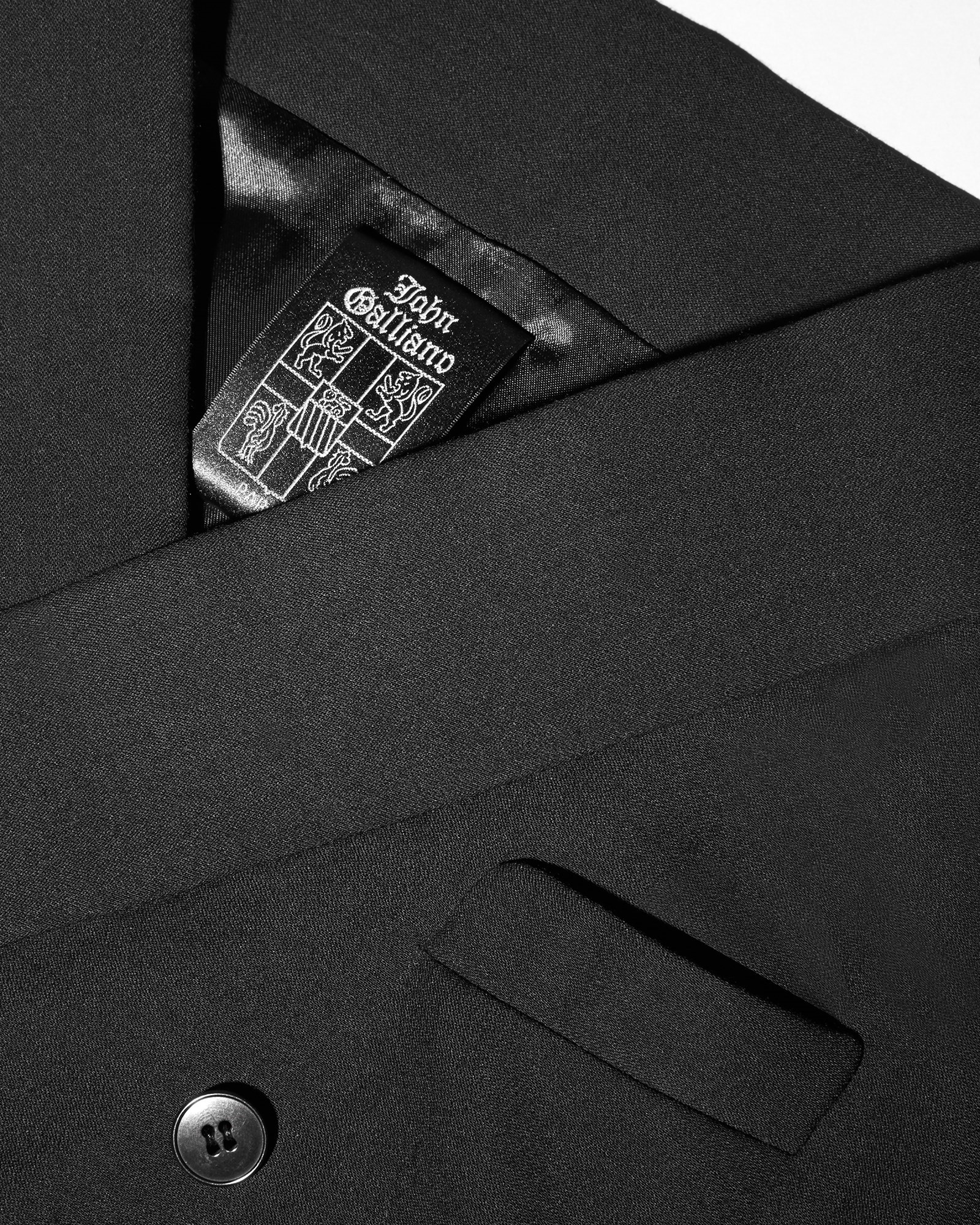
Wool and satin kimono with train, John Galliano, Autumn/Winter 1994
Despite working for a decade, winning numerous awards, international critical acclaim and moving his business to Paris, John Galliano was penniless in 1994. In a well-worn fashion fairy tale, Anna Wintour used her clout to pull strings and secure him a backer, Paine-Webber, to enable him to stage a show on Saturday 5th March, 1994, in the faded grandeur of a magnificent Parisian hotel particular owned by the Portuguese socialite São Schlumberger. It’s always referred to as “back from the brink,” because it was. It launched Galliano’s international career commercially, stamping his authority on the decade. The clothes? A mere handful, almost all black, with a shot of pink chiffon, magically rustled up in three weeks. Lady Amanda Harlech, then Galliano’s right-hand woman, who now works for Karl Lagerfeld, described the muse as “An oriental kittenish princess.” This kimono coat-dress, cut in fine wool voile with a floor-skimming train and mini hemline in front, was worn by Linda Evangelista. A slew of supermodels – Kate, Linda, Christy, Naomi, Helena, models who still don’t need a surname – worked the floors of the Schlumberger mansion salon-style, for love, and clothes, but not for money. They could have been making tens of thousands, but they chose to be with Galliano, in a tumbledown townhouse on the Rue Ferou, making magic.
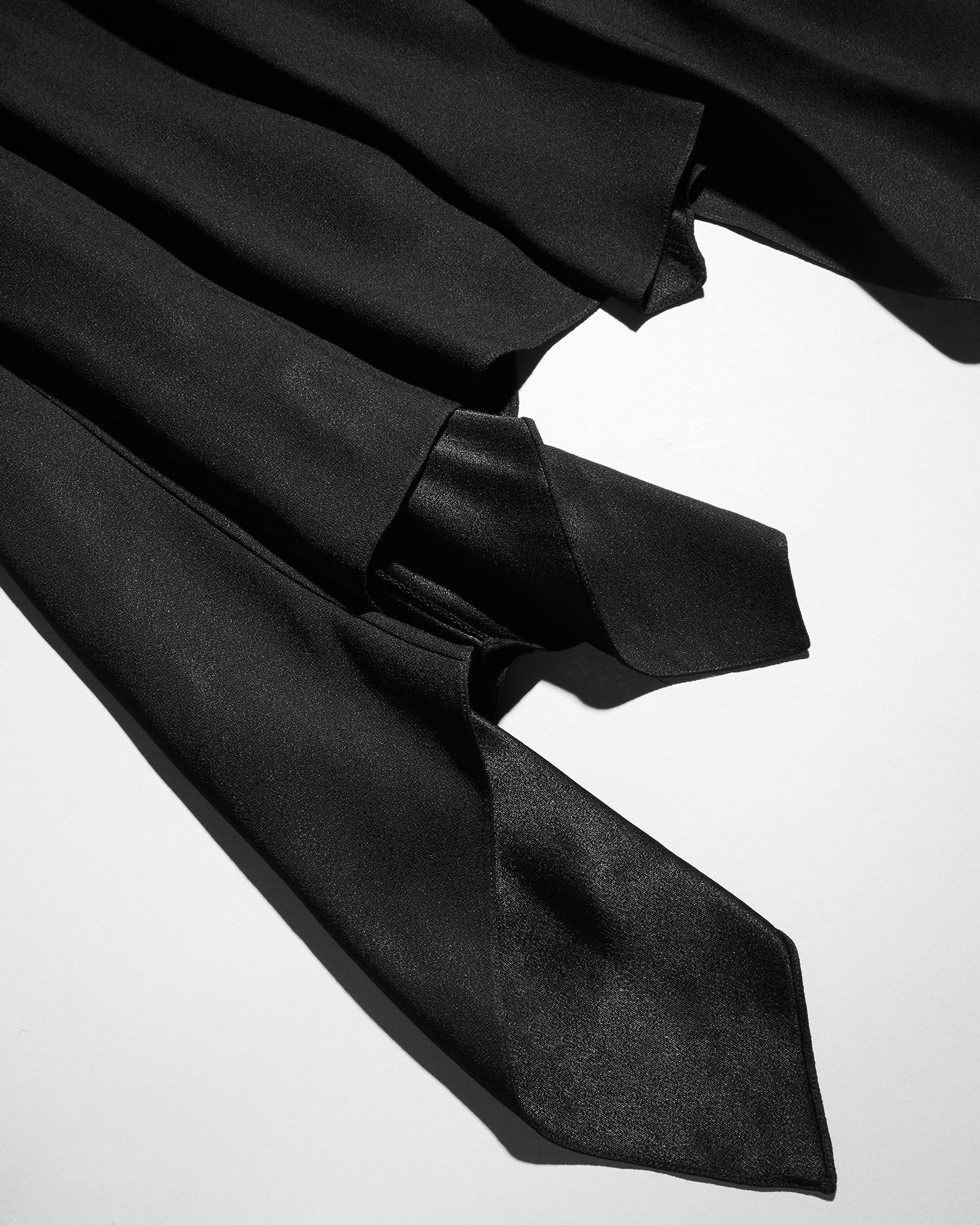
Bias-cut satin-back crepe dress, John Galliano, Autumn/Winter 1994
That’s all very elegiac. But the technique of Galliano’s 1994 collection changed fashion as much as the evocative setting (which, incidentally, influenced many designers to move away from the central show space of the Louvre’s Carousel). In the words of Anna Wintour “The bias cut slip dress is really a symbol of what women wore at night in the nineties, and that was John, completely John.” Bias cutting places the fabric on the cross, allowing for a degree of elasticity, meaning dresses – like this – can be constructed with a form-fitting cut but without fastenings. A technique invented by Madeleine Vionnet, the first designer to use the technique for entire dresses, it came to define to clinging silhouettes of the twenties and thirties. Despite those historical allusions, Galliano’s interpretation is modern: sexy and slick, it also slips on as easily as a t-shirt. It is pieced together intricately from almost 30 individual pattern pieces.
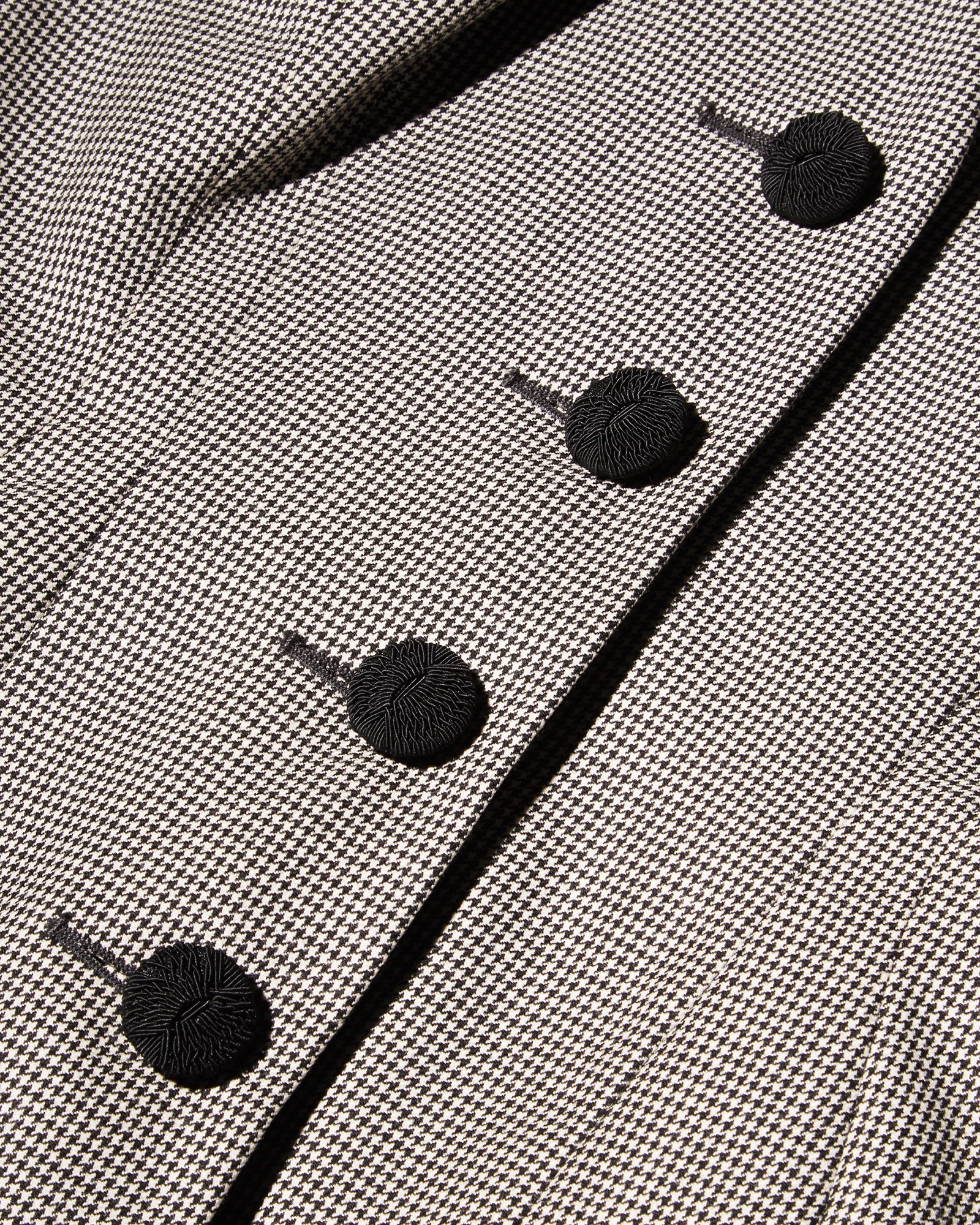
Houndstooth suit, John Galliano, Spring/Summer 1995
Dior before Dior, this hourgless-waisted suit is emblematic of Galliano’s obsession with the elegance of mid-century haute couture, and his emulation of its painstaking technique. That is as evident in his tailoring as in his signature evening gowns. Worn by Yasmeen Ghauri, this suit displaced glove-style fastenings to the inside of the elbow, and it cut with a “disappearing lapel”, which magically vanishes into a web of seaming at the handspan waist of the jacket. This show was, arguably, Galliano’s grand audition for a job in French haute couture, covering the gamut from curvy day tailoring through voluminous tulle evening gowns and the flawless bias-cutting that, as early as October 1994, had become his hallmark. A year after this show, he was appointed successor to the Comte Hubert de Givenchy, the first British designer since the war to run a French haute couture house.

Casentino wool coat with bustle, John Galliano, Autumn/Winter 1995
The A/W95 John Galliano show invited its audience to stumble through a narrow wardrobe: like the Chronicles of Narnia, it was the portal to another world. The world was the snowy rooftops of Spain, where Galliano presented a strict collection of linear black tailoring and flamboyant flamenco evening dresses. The reception was mixed, but this was my favourite Galliano show ever. I obviously wasn’t there – but I did wear this coat to Galliano’s first Artisanal show for Maison Margiela, back in January. This close-up focuses on the soutache braid buttons, a typically old-world Galliano touch – a difficult couture detail in a world obsessed with easy mass-manufacture – that makes the garment feel more appropriate to the 1890s than the 1990s.
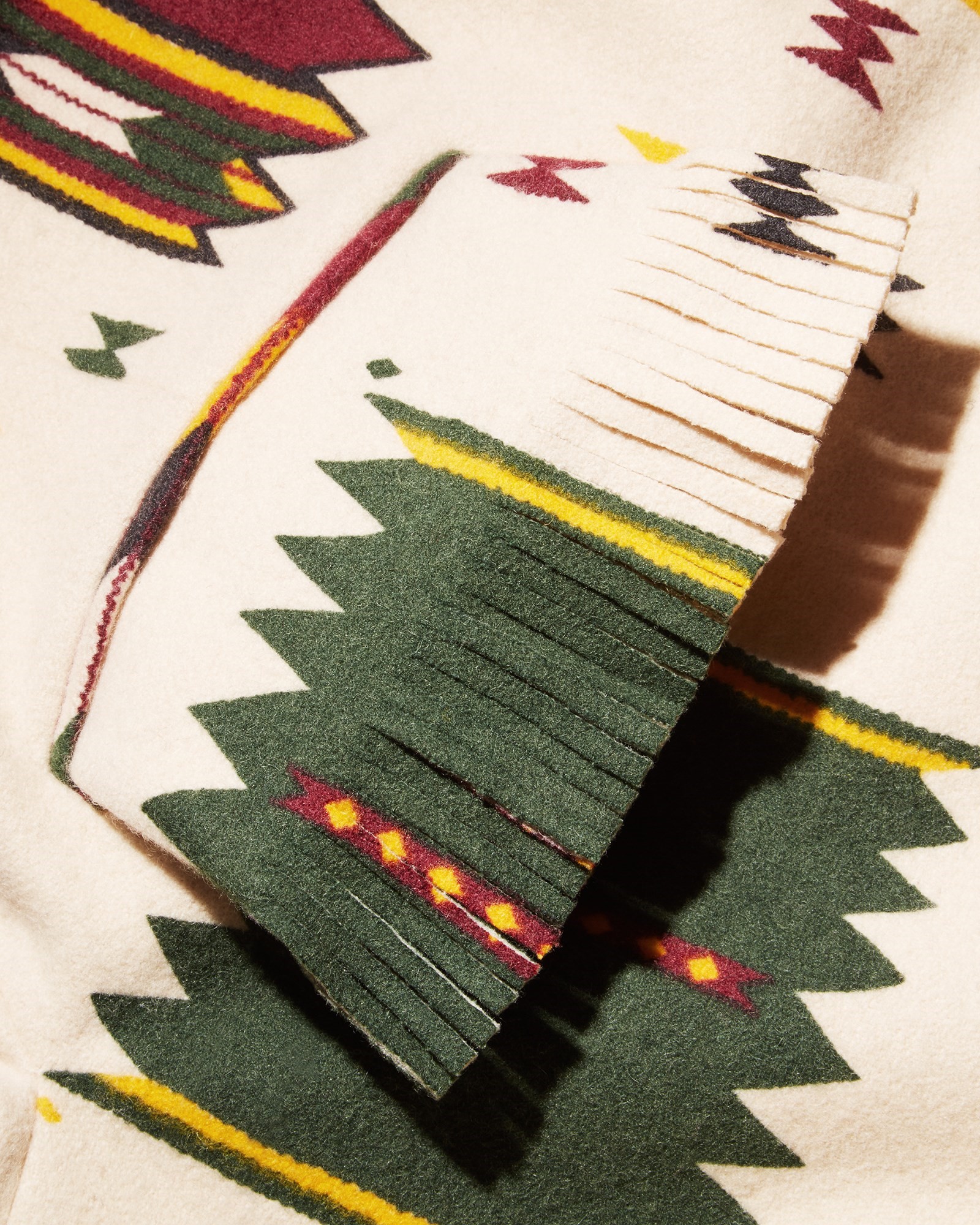
Wool coat with fringe, John Galliano, Autumn/Winter 1996
Lady Amanda Harlech once described this show to me as “Honcho girls” – I’ve heard it described elsewhere as “Pocahontas goes to a twenties couture show” and it was shown a full two years ahead of the marvellous folly of Galliano’s Native American-themed “Diorient Express”. Suzanne von Aichinger – a Galliano model and muse, who worked with him throughout his tenure at Givenchy and his first years at Dior – recalled going out clubbing in her kimono-sleeved, Apache-patterned coat and Adam Ant-style eye make-up straight after the show. Her coat – a variation on the theme seen here – was later bought and worn by Dodie Rosekrans, a wealthy socialite, couture client and supporter of Galliano.
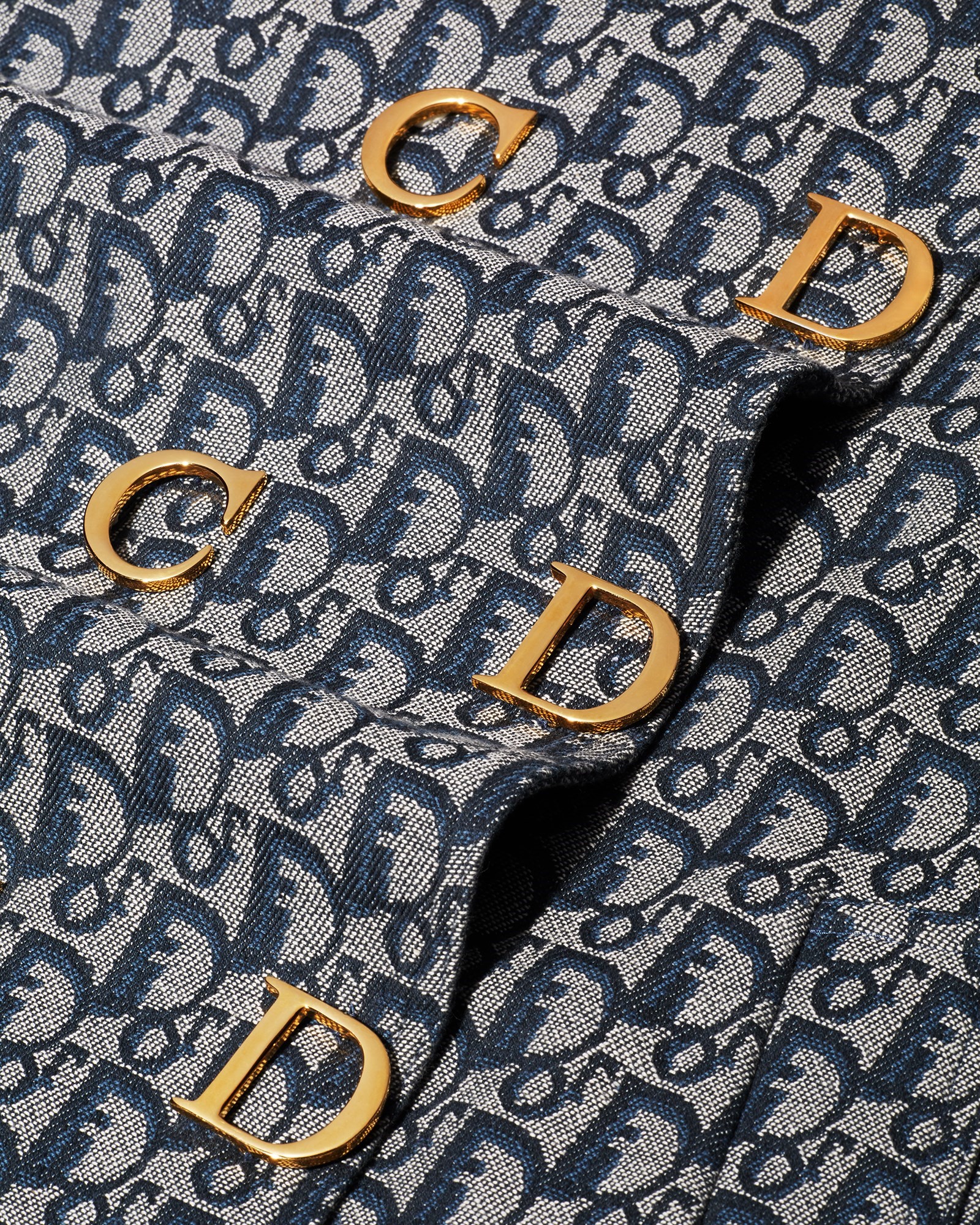
Monogram trench-coat, John Galliano for Christian Dior, Autumn/Winter 2000
After a year at the house of Givenchy – where he sent back clothes to the ateliers pinned with notes scrawled with the words “Tighter!” and “Shorter!” – Galliano moved to Christian Dior, the French fashion industry’s grand dame, in time for her fiftieth birthday. Galliano’s remit, in his own words, was “not to chop these wonderful trees down, but… to prune them.” He revitalised the house of Dior, reignited sales and press interest, and helped propel Dior into its current position as a creative juggernaut. His A/W00 collection, titled “Fly Girls” and soundtracked by Kelis and Foxy Brown, was a prime example. The season before, Galliano had dusted off the label’s logo canvas from the seventies archives and reinvented it as a twenty-first century Ghetto Fabulous staple. That show was inspired by Lauryn Hill, and was worn by a young Beyonce Knowles in the video for Destiny’s Child’s Jumpin’ Jumpin’. I have an entire outfit from that show, of cropped hooded jacket and trousers that unzip into booty shorts, once owned by Ivana Trump. A terrifying prospect. This trench coat, with its blown-up “C” and “D” buttons and all-over monogram, was a key piece – both on the catwalk and for subsequent retail sales.

“Denim” finish shearling boots, John Galliano for Christian Dior, Autumn/Winter 2000
John Galliano’s clothes are frequently far more complex than they originally appear. Take these boots: they ooh like tie-dyed denim, but are in fact shearling treated with a denim trompe l’oeil. Elsewhere in this collection, Galliano first utilised newsprint on ready-to-wear clothes, in emulation of a pair of trousers from his controversial homeless-inspired Spring/Summer 2000 haute couture collection, printed with reviews of his past shows from the pages of the International Herald Tribune. There are subtler details at play here, like the heel twisted to expose the leather innards – so simple, but with a mind-boggling technical complexity at play. The corset-lacing and strapping harked back to Galliano’s Spring/Summer show of the same year, inspired by horse-racing, hence the tack-shop feel to the glistening “CD” bit-buckle that rapidly became a new house trademark.
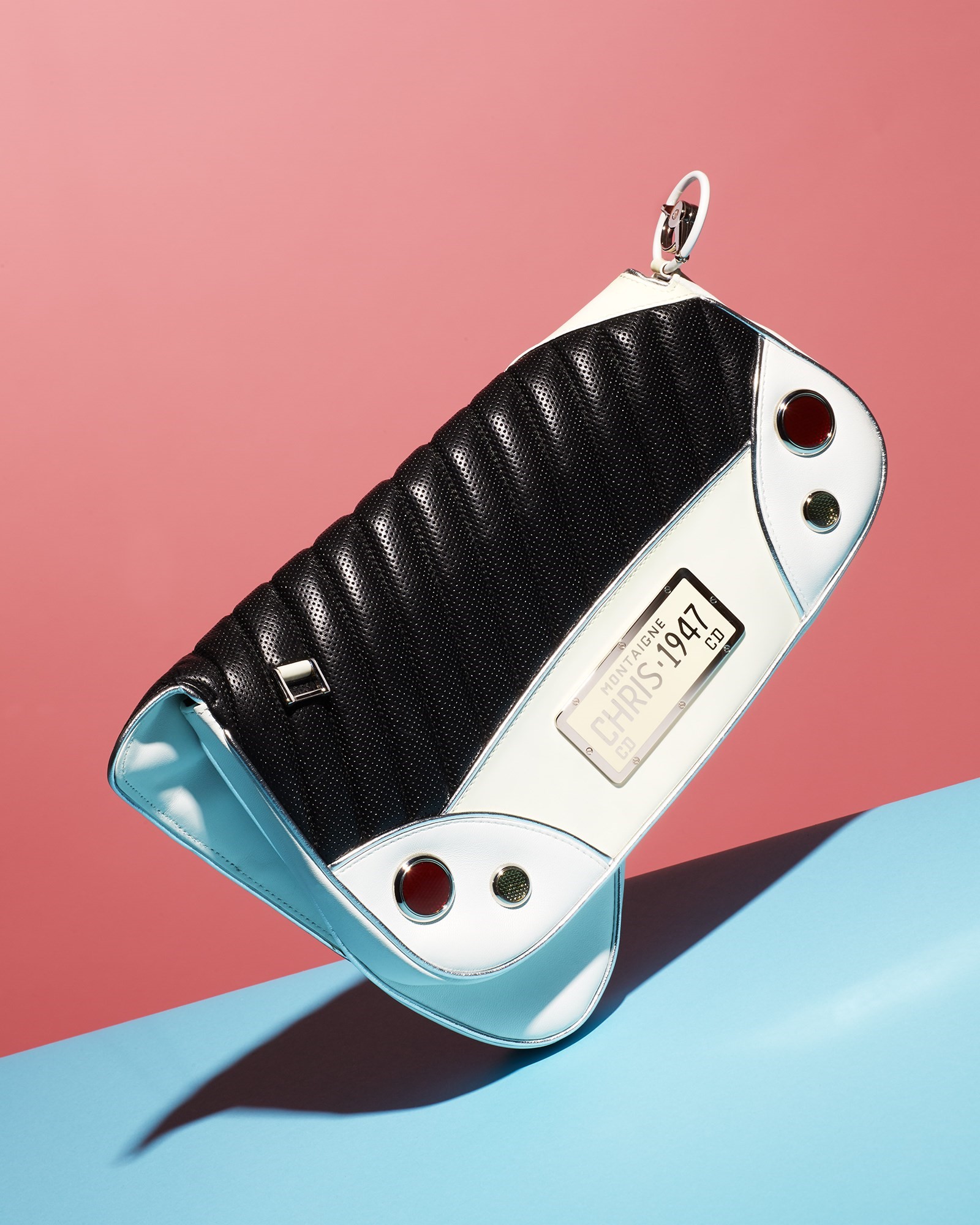
“Cadillac” bag, John Galliano for Christian Dior, Spring/Summer 2001
For S/S01, Galliano ripped Dior apart. He dedicated his show to “Trailer Trash”, opening with a soundtrack of Jerry Springer audience chants and closing with a Hole-worthy parade of ravaged beauty-queens in sashes anointing them with titles named after Dior fragrances. It was a mark of his absolute confidence that Galliano could propose something so audacious for Dior – in fact, two days later, he even went to far as to base his own-label collection on this Dior show, opening with same outfits and then playing Britney Spears’ “Oops I Did it Again” before remixing it into his own label. "I have been inspired by Picasso and paintings like Guernica that happened because of a historical event,” he told Suzy Menkes. “So I am going to reconstruct my Dior show of 48 hours ago through Picasso's eyes." Yikes. His Dior Cadillac handbag was an audacious and provocative reworking of a womens’ accessory, complete with polished patent-leather “chassis” and silver door-handly, as if wrenched off a wrecked car. Even the shoulder-strap was attached to the bag via a mini steering-wheel embossed with “CD”. Those are the details I’m talking about, that make Galliano’s world quite so magical. There’s God in every one of them.
